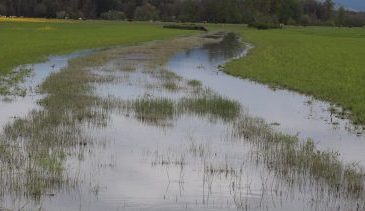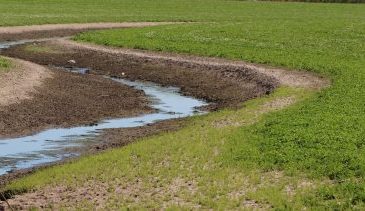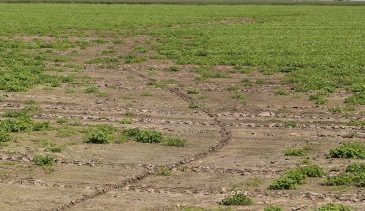Harvest season has just begun in the Willamette Valley. It is a delicate period; timing is everything, and as the year’s efforts suddenly come to fruition, getting the harvest in and the balance sheets back in the black weigh heavily on farmers’ minds. For the Streaked Horned Lark, harvest can be a time of great peril, but the fields do make excellent nesting and feeding habitat once the crop has been harvested.
Seeds are the primary cash crop here: grass seeds headed to every garden supply or hardware store, cover crop seeds like radish and clover, and even oilseeds from the glowing fields of meadowfoam. Wheat has slowly taken a backseat to these crops, but wheat fields for grain, and for seed, are still present here and there.
By this time the rains have stopped and the waters have receded. The fields, once downright soupy, have dried enough to hold the weight of the mower and the combine. Due to the thick, tall crops, the ditches and low spots that once held water are tough to see from ground level, but the Streaked Horned Lark knows exactly where they are. These features are ideal summertime lark habitat since they have low, sparse vegetation caused by the wintertime standing water.
Known as “ephemeral waterways” by some and “drown-outs” by others, these areas typically offer poor yields compared to drier parts of the field. Many still get harvested, though: it’s time-consuming and expensive to steer around odd shapes in the middle of a giant square field, especially when every moment counts during peak harvest season.
These waterways are just one of the landscape features identified as having great potential for lark conservation. Problematic for the farmer, beneficial for the lark, and important for water quality, too. We will continue to identify opportunities like this one, and work with farmers at every step to determine how best to manage the land for agricultural and habitat values.
Post Submitted by Niles Brinton, Pacific Birds Conservation Specialist



